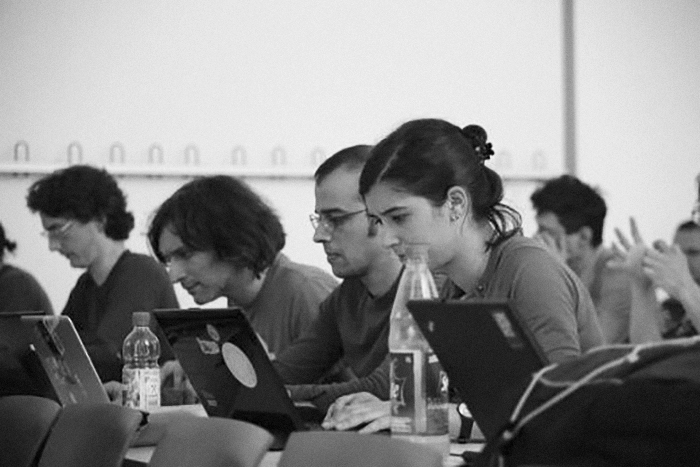
Black And White Photo Shows How An Optical Illusion Can Trick Our Brain Into Coloring It
What do you see? This bizarre and apparently effective optical illusion is sweeping the internet because it turns an ordinary black and white photo into a color one. I say apparently because somehow it doesn’t quite work for me, I only see annoying colored grid lines all over the photo!
Image credits: Øyvind Kolås
Image credits: page_eco
The image, created by digital media artist and software developer Øyvind Kolås, tricks your brain into ‘filling in the gaps,’ taking the cues from the colored lines to predict what the rest of the picture should look like. Kolås calls the photo illusion experiment a ‘color assimilation grid illusion,’ and is simply different colored grids laid over a greyscale photo.
Image credits: Øyvind Kolås
“An over-saturated colored grid overlaid on a grayscale image causes the grayscale cells to be perceived as having color,” Kolås said about the illusion photo on his Patreon page.
Image credits: Øyvind Kolås
It isn’t only grids that have the desired effect, although they appear to be the most effective for most people. Dots and lines also work to create the eye trick in a similar fashion, with the lines working best to produce overall color for me personally.
What about you?
Image credits: Øyvind Kolås
Image credits: Manuel Schmalstieg
Image credits: Øyvind Kolås
Image credits: hodefoting
Image credits: MathKyle
You can see the experiment in video form below
Image credits: Øyvind Kolås
Here’s how people reacted to the illusion
Indeed. I wonder how much of the effect is due to image compression. I opened the images in GIMP and zoomed in - The pixels between the patterns are colored. RANDOMLY, mind you - but for the thin lines, which work best for me, there are very thin faint lines of the same color between them... Which probably happened when saving the image as jpg. That format averages over pixels (and thereby colors), that's sort of the point. I feel tempted to try this out with png and see if the effect remains...
Load More Replies...This is really cool. But if you read a lot of comics, you'd recognize this very familiar technique. ♥
Color in color comics (and most printing) is produced by the four-color printing process, not by any sort of B&W optical illusion. Semi-transparent inks (cyan, magenta, yellow) of different dot patterns in various percentages are printed over a base layer of (non-transparent) black ink... which may be solid and/or dot pattern (for grey). Been the same basic process for nearly a century.
Load More Replies...It feels interesting and is amazing, but basically we don't get to see a black and white image, but a partially colored image. (Since there ARE added colors.) Squint your eyes, as it blurres, your brain won't have to fill in the gaps.
Most importantly, the image compression algorithm (jpg) means the image IS already slightly blurred, especially for the thin lines. I wonder if saving the altered images as png might have led to a less impressive result...
Load More Replies...Indeed. I wonder how much of the effect is due to image compression. I opened the images in GIMP and zoomed in - The pixels between the patterns are colored. RANDOMLY, mind you - but for the thin lines, which work best for me, there are very thin faint lines of the same color between them... Which probably happened when saving the image as jpg. That format averages over pixels (and thereby colors), that's sort of the point. I feel tempted to try this out with png and see if the effect remains...
Load More Replies...This is really cool. But if you read a lot of comics, you'd recognize this very familiar technique. ♥
Color in color comics (and most printing) is produced by the four-color printing process, not by any sort of B&W optical illusion. Semi-transparent inks (cyan, magenta, yellow) of different dot patterns in various percentages are printed over a base layer of (non-transparent) black ink... which may be solid and/or dot pattern (for grey). Been the same basic process for nearly a century.
Load More Replies...It feels interesting and is amazing, but basically we don't get to see a black and white image, but a partially colored image. (Since there ARE added colors.) Squint your eyes, as it blurres, your brain won't have to fill in the gaps.
Most importantly, the image compression algorithm (jpg) means the image IS already slightly blurred, especially for the thin lines. I wonder if saving the altered images as png might have led to a less impressive result...
Load More Replies...
 Dark Mode
Dark Mode 

 No fees, cancel anytime
No fees, cancel anytime 








































































170
55